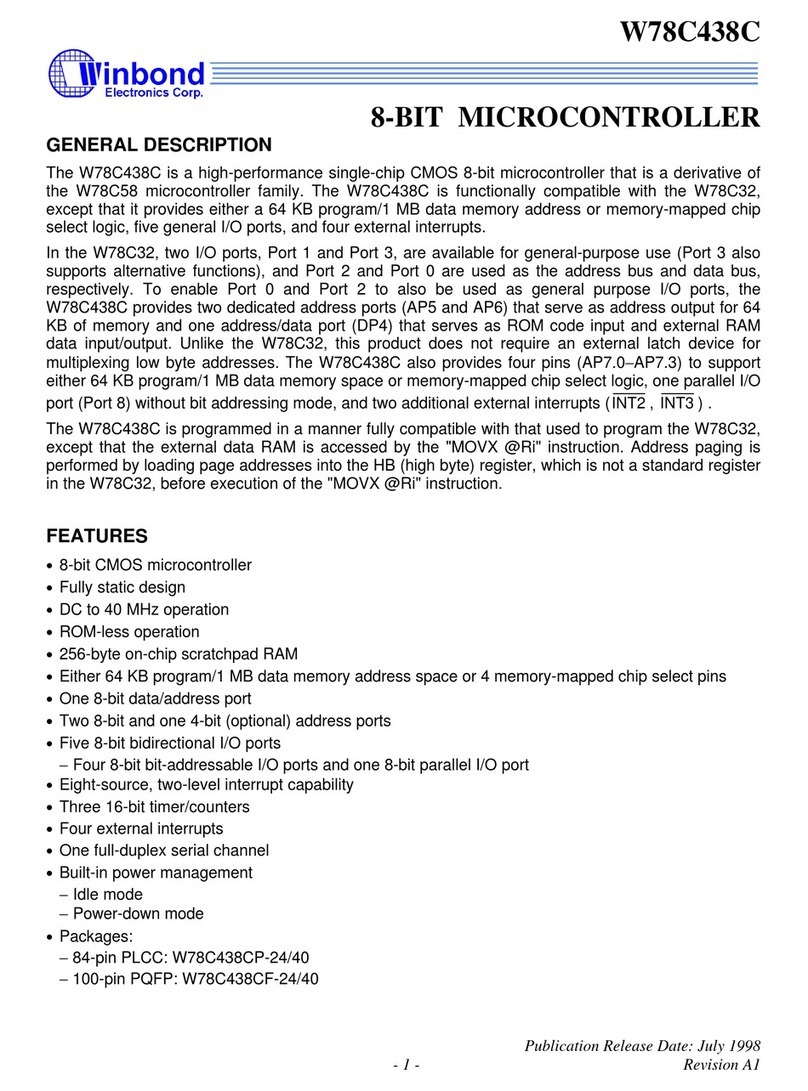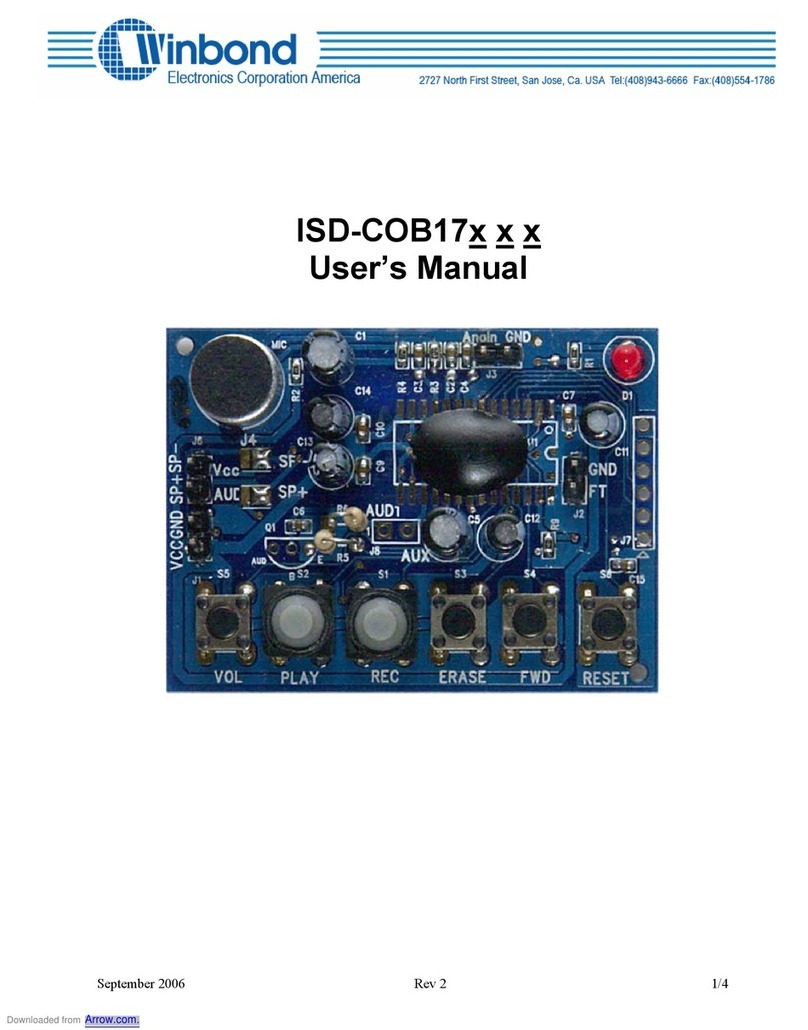W742E/C813
4-BIT MICROCONTROLLER
Publication Release Date: December 2000
-1-Revision A1
Table of Contents-
1. GENERAL DESCRIPTION......................................................................................................................3
2. FEATURES .............................................................................................................................................3
3. PIN CONFIGURATION............................................................................................................................5
4. PIN DESCRIPTION.................................................................................................................................6
5. FUNCTIONAL DESCRIPTION................................................................................................................8
5.1 Program Counter (PC)..............................................................................................................8
5.2 Stack Register (STACK)...........................................................................................................8
5.3 Program Memory (ROM) ..........................................................................................................9
5.3.1 ROM Page Register (ROMPR).........................................................................................10
5.3.2 ROM Addressing Mode ....................................................................................................10
5.4 Data Memory (RAM)...............................................................................................................12
5.4.1 Architecture ......................................................................................................................12
5.4.2 RAM Page Register (PAGE).............................................................................................12
5.4.3 WR Page Register (WRP)................................................................................................13
5.4.4 Data Bank Register (DBKRH, DBKRL).............................................................................14
5.4.5 RAM Addressing Mode.....................................................................................................15
5.5 Accumulator (ACC).................................................................................................................16
5.6 Arithmetic and Logic Unit (ALU).............................................................................................16
5.7 Main Oscillator........................................................................................................................16
5.8 Sub-oscillator..........................................................................................................................17
5.9 Dividers...................................................................................................................................17
5.10 Dual-clock Operation..............................................................................................................17
5.11 Watchdog Timer (WDT) .........................................................................................................18
5.12 Timer/Counter.........................................................................................................................19
5.12.1 Timer 0 (TM0).................................................................................................................19
5.12.2 Timer 1 (TM1).................................................................................................................20
5.12.3 Mode Register 0 (MR0) ..................................................................................................22
5.12.4 Mode Register 1 (MR1) ..................................................................................................22
5.13 Interrupts ................................................................................................................................22
5.14 Stop Mode Operation .............................................................................................................24
5.14.1 Stop Mode Wake-up Enable Flag for RC and RD Port (SEF)........................................24
5.15 Hold Mode Operation .............................................................................................................24
5.15.1 Hold Mode Release Enable Flag (HEF, HEFD)..............................................................26

































